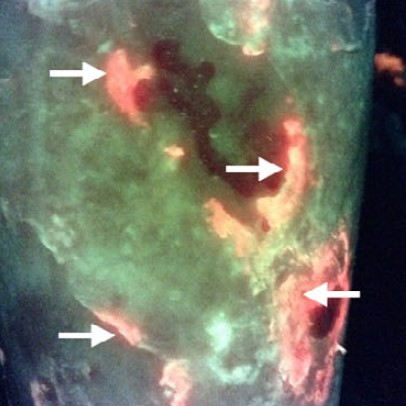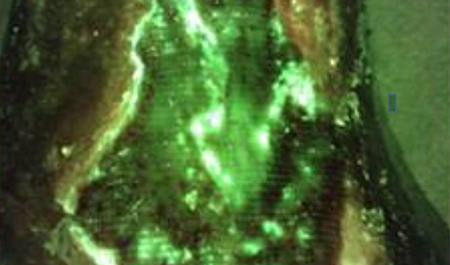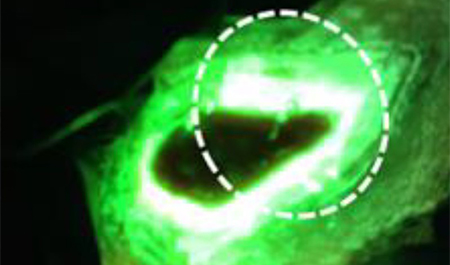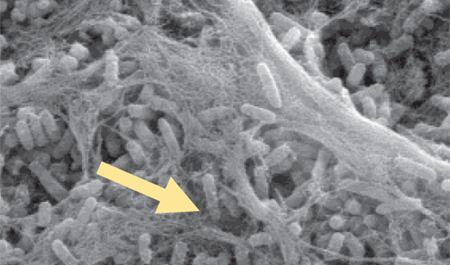Abstract: Wound biofilms must be identified to target disruption and bacterial eradication but are challenging to detect with standard clinical assessment. This study tested whether bacterial fluorescence imaging (MolecuLight i:X) could detect porphyrin‐producing bacteria within a biofilm using well‐established in vivo models. Mouse wounds were inoculated on Day 0 with planktonic bacteria (n = 39, porphyrin‐producing and non‐porphyrin‐producing species, 107 colony forming units (CFU)/wound) or with polymicrobial biofilms (n = 16, 3 biofilms per mouse, each with 1:1:1 parts Staphylococcus aureus/Escherichia coli/Enterobacter cloacae, 107 CFU/biofilm) that were grown in vitro. Mouse wounds inoculated with biofilm underwent fluorescence imaging up to Day 4 or 5. Wounds were then excised and sent for microbiological analysis. Bacteria‐matrix interaction was assessed with scanning electron microscopy (SEM) and histopathology. A total of 48 hours after inoculation with planktonic bacteria or biofilm, red fluorescence was readily detected in wounds; red fluorescence intensified up to Day 4. Red fluorescence from biofilms persisted in excised wound tissue post‐wash. SEM and histopathology confirmed bacteria‐matrix interaction. This pre‐clinical study is the first to demonstrate the fluorescence detection of bacterial biofilm in vivo using a point‐of‐care wound imaging device (MolecuLight i:X). These findings have implications for clinicians targeting biofilm and may facilitate improved visualisation and removal of biofilms.
Back to All Clinical Evidence
Species Detected/Biofilm, Pre-Clinical Applications
Detection of bacterial fluorescence from in vivo wound biofilms using a point‐of‐care fluorescence imaging device
Successful removal of biofilm in wounds is contingent upon accurate detection of bacterial burden
Fluorescence imaging (MolecuLight i:X) can detect wound bacteria encased in biofilm, as confirmed by SEM and histopathology
Red fluorescence observed from in vivo polymicrobial wound models is specific to bacteria, and not from an immune response















